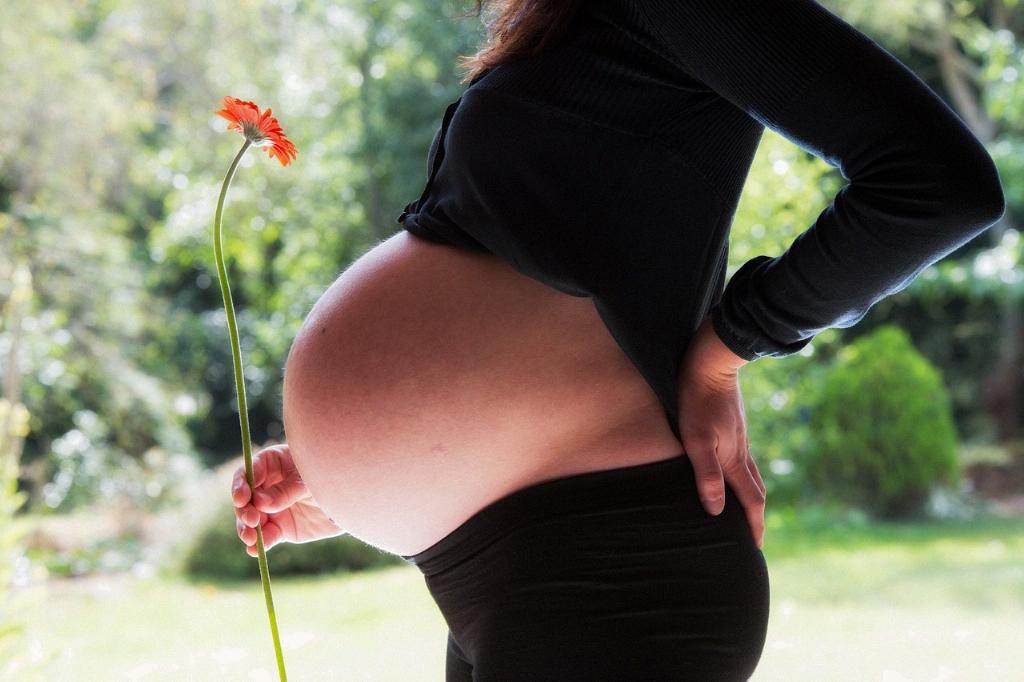During pregnancy, many changes occur in a woman’s body, and one common issue that often arises is the swelling or enlargement of the legs. This phenomenon can be attributed to a combination of factors, primarily centered around the increased pressure on the blood vessels carrying blood back to the heart. As the baby grows, the uterus expands, placing pressure on these vessels and hindering the normal flow of blood, leading to fluid retention and swelling in the lower extremities.
Fluid Retention and Edema
The swelling in your legs, ankles, and feet during pregnancy is often a result of fluid retention, a condition known as edema. This buildup of fluid in the tissues is caused by the impaired circulation due to the pressure exerted by the growing uterus. Edema is a common issue in pregnancy and can also be influenced by hormonal changes in the body.
Role of Hormones
Hormones play a significant role in the changes that occur in a woman’s body during pregnancy, including the enlargement of the legs. Hormonal fluctuations, particularly an increase in progesterone levels, can contribute to water retention and swelling in the extremities. These hormonal changes can affect the balance of fluids in the body, leading to the accumulation of excess fluid in the tissues.
Increased Blood Volume
Another factor contributing to the enlargement of your legs during pregnancy is the increase in blood volume. As your body produces more blood to support the growing fetus, the circulatory system works harder to meet the demands of both you and your baby. This increased blood volume can further strain the blood vessels, leading to fluid buildup and swelling in the lower limbs.
Reduced Circulation
The pressure exerted by the expanding uterus can also compress the blood vessels in the pelvic region, causing reduced circulation in the legs. This compromised blood flow can impede the body’s ability to efficiently transport fluids back to the heart, resulting in the pooling of blood and fluids in the lower extremities, exacerbating the swelling and enlargement of the legs.
Weight Gain and Gravity
Weight gain during pregnancy, coupled with the effects of gravity, can further contribute to the enlargement of your legs. The additional weight of the baby, placenta, and amniotic fluid places added strain on the legs, making it more challenging for the circulatory system to return blood to the heart effectively. Gravity also plays a role in causing fluid to accumulate in the lower extremities, adding to the swelling experienced during pregnancy.
Importance of Proper Hydration
Staying hydrated is crucial during pregnancy to help alleviate swelling in the legs. Drinking an adequate amount of water can help maintain the body’s fluid balance and prevent excessive water retention. Additionally, elevating your legs when possible and engaging in gentle exercise, such as walking or prenatal yoga, can promote circulation and reduce swelling in the lower limbs.
When to Seek Medical Attention
While some degree of swelling in the legs is normal during pregnancy, it is essential to be mindful of any concerning symptoms. If you experience sudden or severe swelling, particularly in one leg, along with pain, redness, or warmth, it could indicate a more serious condition such as deep vein thrombosis (DVT) or preeclampsia. In such cases, seeking prompt medical attention is crucial to ensure the health and safety of both you and your baby.
Compression Garments and Support
Wearing compression stockings or support garments can provide relief for swollen legs during pregnancy by applying gentle pressure to the legs and promoting better circulation. These garments can help reduce discomfort and swelling, especially when worn during periods of prolonged standing or sitting. Consult with your healthcare provider to determine the most appropriate compression level and fit for your needs.
Conclusion
In conclusion, the enlargement of your legs during pregnancy is a common occurrence attributed to a combination of factors, including pressure on the blood vessels, hormonal changes, increased blood volume, reduced circulation, weight gain, and gravity. Understanding the underlying causes of leg swelling can help you take proactive steps to manage and alleviate discomfort during this transformative time. Remember to prioritize proper hydration, elevation, and movement to support healthy circulation and reduce swelling in your lower extremities.

